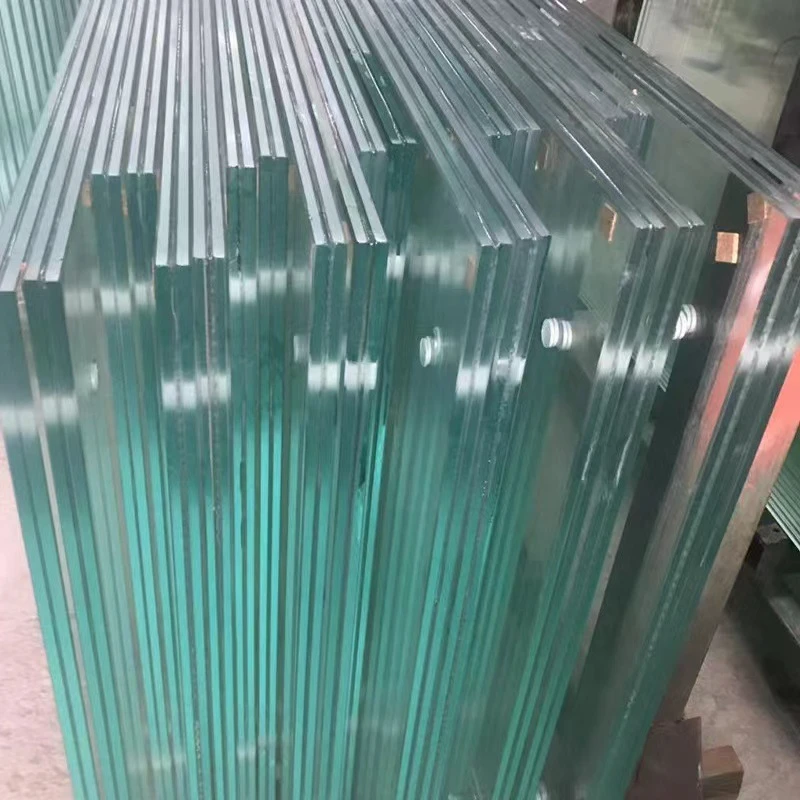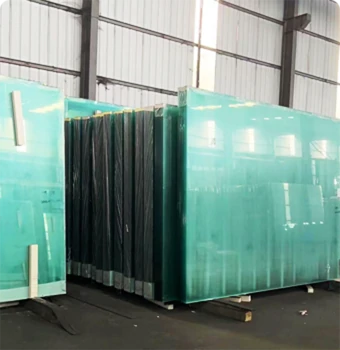Different tempered glass products have redefined safety and aesthetics across various industries. This evolution has been driven by innovations in manufacturing processes, which enhance both the functionality and the visual appeal of glass installations. Understanding the diverse options available can empower consumers to make well-informed decisions, ensuring they choose a product that meets both aesthetic and safety requirements.

Tempered glass, by itself, is lauded for its superior strength compared to regular glass. This is achieved through a meticulous process of extreme heating followed by rapid cooling. The result is a material that can withstand significant stress and impact, making it an ideal choice for modern architectural and interior design needs. When broken, tempered glass crumbles into small, less harmful pieces, reducing the risk of injury. This characteristic alone makes it a preferred choice for industries prioritizing safety.
One variation is heat-strengthened glass, which sits somewhere between annealed and fully tempered glass in terms of strength. It offers a perfect solution for situations where thermal stress resistance is crucial but full tempering might be excessive. This product is prevalent in curtain walls and storefronts, where moderate wind loads are expected and human safety is not as critical.

Laminated tempered glass adds another layer of protection by combining multiple glass sheets with an interlayer, usually made of polyvinyl butyral (PVB). This design ensures that even if the glass breaks, the interlayer holds the fragments in place, a feature exceptionally important in environments prone to severe weather conditions or high-impact risks. Additionally, laminated glass offers enhanced sound insulation and UV filtering, making it a multifaceted choice for both residential and commercial applications.
Extra-clear or low-iron tempered glass is gaining popularity for its aesthetic appeal. Regular tempered glass has a slight green tint due to iron content, which can alter the appearance, particularly in thicker panels. By reducing the iron content, extra-clear glass provides unmatched clarity and transparency, perfect for luxurious storefronts, display cases, and aquarium panels where true color representation is paramount.
different tempered glass
When discussing authority in the field, Pyrolytic or hard-coat tempered glass emerges as a leader for thermal insulation. This type of glass features a metallic coating applied during production, making it robust enough to endure high temperatures and rigorous cleaning. Its ability to reflect infrared heat while allowing visible light to pass through makes it ideal for energy-efficient windows, contributing to reduced heating and cooling costs.
Switchable or smart glass technology represents the pinnacle of innovation within tempered glass products. These types of glass can switch from translucent to transparent at the flick of a switch. Applicable in privacy glass windows, conference rooms, and high-end vehicles, this technology not only boosts convenience but also embodies a modern approach to privacy and design.
Trust in tempered glass products arises from rigorous quality standards and certifications that reputable manufacturers adhere to, ensuring consumers receive products that meet global safety and performance benchmarks. Trustworthy brands often provide detailed documentation and educational resources that guide consumers through the selection process, highlighting the importance of understanding specific needs before making a purchase.
Anyone looking to invest in tempered glass should consider factors such as location, purpose, and aesthetic preference to select the most suitable product. By staying informed about the latest advancements and applications, one can maximize the benefits of tempered glass, ensuring both safety and style are preserved in their projects.
 Afrikaans
Afrikaans  Albanian
Albanian  Amharic
Amharic  Arabic
Arabic  Armenian
Armenian  Azerbaijani
Azerbaijani  Basque
Basque  Belarusian
Belarusian  Bengali
Bengali  Bosnian
Bosnian  Bulgarian
Bulgarian  Catalan
Catalan  Cebuano
Cebuano  Corsican
Corsican  Croatian
Croatian  Czech
Czech  Danish
Danish  Dutch
Dutch  English
English  Esperanto
Esperanto  Estonian
Estonian  Finnish
Finnish  French
French  Frisian
Frisian  Galician
Galician  Georgian
Georgian  German
German  Greek
Greek  Gujarati
Gujarati  Haitian Creole
Haitian Creole  hausa
hausa  hawaiian
hawaiian  Hebrew
Hebrew  Hindi
Hindi  Miao
Miao  Hungarian
Hungarian  Icelandic
Icelandic  igbo
igbo  Indonesian
Indonesian  irish
irish  Italian
Italian  Japanese
Japanese  Javanese
Javanese  Kannada
Kannada  kazakh
kazakh  Khmer
Khmer  Rwandese
Rwandese  Korean
Korean  Kurdish
Kurdish  Kyrgyz
Kyrgyz  Lao
Lao  Latin
Latin  Latvian
Latvian  Lithuanian
Lithuanian  Luxembourgish
Luxembourgish  Macedonian
Macedonian  Malgashi
Malgashi  Malay
Malay  Malayalam
Malayalam  Maltese
Maltese  Maori
Maori  Marathi
Marathi  Mongolian
Mongolian  Myanmar
Myanmar  Nepali
Nepali  Norwegian
Norwegian  Norwegian
Norwegian  Occitan
Occitan  Pashto
Pashto  Persian
Persian  Polish
Polish  Portuguese
Portuguese  Punjabi
Punjabi  Romanian
Romanian  Russian
Russian  Samoan
Samoan  Scottish Gaelic
Scottish Gaelic  Serbian
Serbian  Sesotho
Sesotho  Shona
Shona  Sindhi
Sindhi  Sinhala
Sinhala  Slovak
Slovak  Slovenian
Slovenian  Somali
Somali  Spanish
Spanish  Sundanese
Sundanese  Swahili
Swahili  Swedish
Swedish  Tagalog
Tagalog  Tajik
Tajik  Tamil
Tamil  Tatar
Tatar  Telugu
Telugu  Thai
Thai  Turkish
Turkish  Turkmen
Turkmen  Ukrainian
Ukrainian  Urdu
Urdu  Uighur
Uighur  Uzbek
Uzbek  Vietnamese
Vietnamese  Welsh
Welsh  Bantu
Bantu  Yiddish
Yiddish  Yoruba
Yoruba  Zulu
Zulu 


